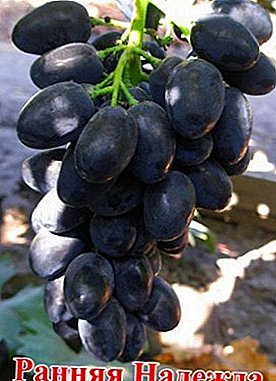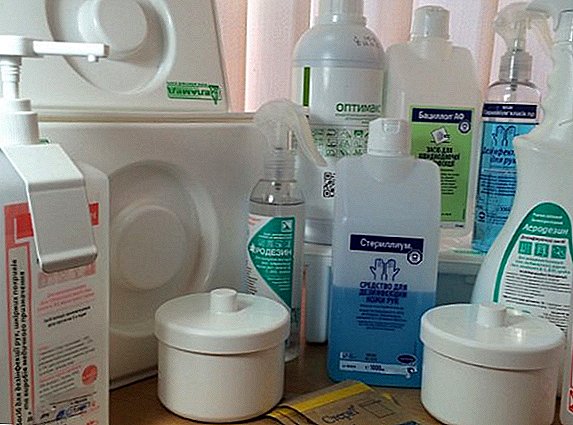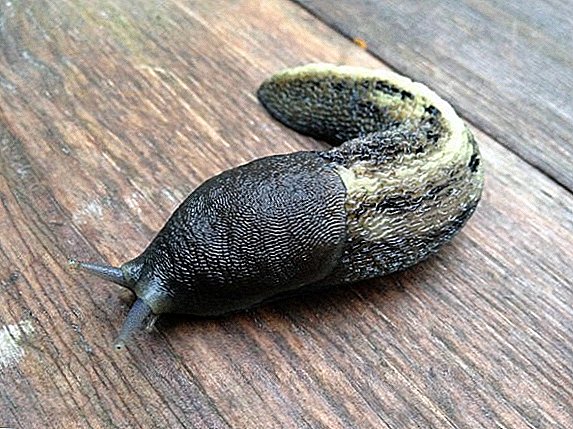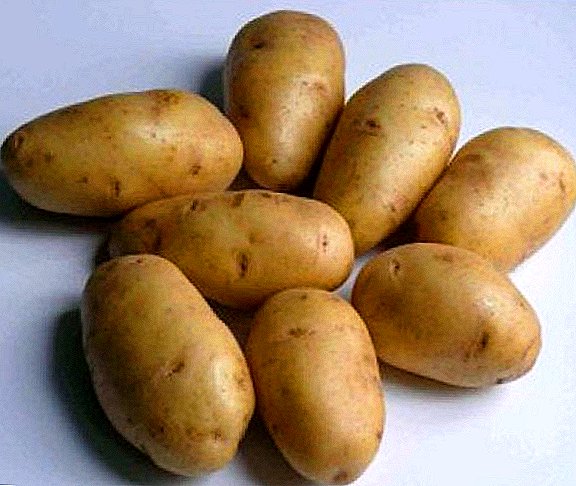 Like most living creatures, chickens can be attacked by various parasites that harm their health and lives, as well as economic damage to the economy. Moreover, some diseases carried by parasitic organisms pose a serious risk to human health.
Like most living creatures, chickens can be attacked by various parasites that harm their health and lives, as well as economic damage to the economy. Moreover, some diseases carried by parasitic organisms pose a serious risk to human health.
External parasites
External parasites are united by the fact that they carry out their vital activity on or under the surface of the skin and feather cover of poultry.
Common among them are:
- puhopeedov;
- ticks;
- bed bugs.
We advise you to read about how to remove fleas from chickens, as well as from the chicken coop.
Fluffy eats
Insects cause a disease called mallophagus. Puff eaters are often mistakenly called chicken lice, but they are not, as they don’t feed on the blood of donor birds, but on plumage, dead epidermal particles.  However, they also do not disdain blood, however, it is not their main food, and puff-eaters do not extract it on their own, but are satisfied with appearing on the skin after combing. Parasites live on the surface of the skin among the down and chicken feathers. They are quite small in size, about 2 millimeters and dark in color.
However, they also do not disdain blood, however, it is not their main food, and puff-eaters do not extract it on their own, but are satisfied with appearing on the skin after combing. Parasites live on the surface of the skin among the down and chicken feathers. They are quite small in size, about 2 millimeters and dark in color.
Did you know? American entomologists from the University of Illinois have shown that the lupus living in different parts of the bird’s body, belonging to different species and having a different morphological structure, have independently acquired similar adaptation mechanisms of their parasitic activity.
Ways of infection
The coop gets infected very quickly, literally within 24 hours. 
The parasite can penetrate in several ways:
- be brought by other birds - sparrows, pigeons and others;
- be brought by a person on clothing or footwear;
- by rodents and even flies;
- from dirt, old food.
Symptoms
The main symptom is the presence of characteristic holes in the root of the feathers, but in order to detect them, you must first suspect the disease.
As a rule, the behavior of the bird gives reason to do it:
- chickens become restless, often strive to penetrate the beak under the feather cover;
- in later periods, alopecia occurs: the chicken simply bald;
- livestock lose weight, young catastrophically lacking it;
- egg production is reduced.

Treatment
The later the owner runs out, the more difficult it will be to treat the inhabitants of the chicken coop. This parasite is not easy to kill.
Read more about how to get rid of peroedol in chickens.
To get rid of it, the bird is treated with veterinary drugs: 


Dispense tool in accordance with the attached instructions.
Important! Drops do not affect the larvae of the puffed animal, so the treatment needs to be repeated after 7-10 days to get rid of the young insects that were hatched during this time.
Video: how to get puffed up in chickens
Room processing
It is not enough to confine with the treatment of the livestock to fight mallofagiosis, it is imperative to treat the room that is infested with larvae. Disinfection is carried out with the help of "karbofos". There are positive reviews about the small "Masha".
Folk remedies
Modern poultry farmers also use the wisdom of generations, the methods that ancestors used without having developed a chemical industry.
Against puperooeda effective:
- powder from the root of hellebore and branches of the cinnamon, which is treated feather cover;
- the plumage can also be treated with a mixture of kerosene, water and vinegar: it partially dissolves the chitinous cover, and not only adult insects, but also pupae perish;
- wormwood, flowers of tansy and chamomile, which are added to the litter;
- A chicken coop, like its inhabitants, can be treated with a mixture: kerosene, benzene, ammonia, which not only kills the puff of food, but also frightens them off with its smell.

Red chicken tick
Serious diseases carried by this bloodsucker:
- borreliosis;
- plague;
- cholera;
- ornithosis and others.
In length can reach 0.7 millimeters, the body has a flattened, red color, which is replaced by purple, after the tick drank blood. On a white sheet of paper look dark gray dots.
Did you know? In the animal world, the tick is one of the most prolific creatures. The female of one of the species of this insect is able to carry up to 20 thousand eggs in its short life!

Ways of infection
Favorite habitat - damp litter, musty room. It is carried by other birds, including wild and migratory, people can also “bring” the parasite on their clothes and shoes.
Learn more about how to remove ticks from chickens.
Symptoms
If the bird is not treated, it will die over time.
Suspect the presence of the parasite can be when the chickens:
- crests and earrings pale from blood loss;
- constant scratching with beak and shaking of the head;
- appetite increases, and at the same time weight decreases;
- reduction in egg production and the avoidance of laying of former nests;
- growth retardation and weight gain in chickens;
- coughing and wheezing, because in advanced cases the parasite infects the mucous membranes of the nose, pharynx, trachea and larynx, multiplying the suffering.
Video: red chicken tick in chicken
Treatment
For the treatment of poultry there are special acaricidal agents: powders and aerosols.
It will be interesting for you to read about what are the pros and cons of keeping chickens in cages, do you need a rooster for the chickens to carry eggs, why the chickens peck the rooster, how to determine the age of the hen, how long the chicken lives, what to do if the chickens do not so good and peck the eggs.
Red mite is sensitive to organochlorine and organophosphate compounds:
- powder "Sevina" 7%;
- "Ekoflis" - aerosol drug;
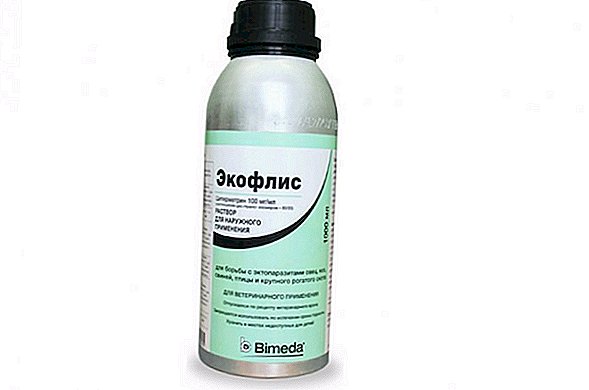
- Peretrium.

Did you know? Female ticks are able to lay unfertilized eggs, and quite viable hatch from them. maggots. The phenomenon called parthenogenesis is inherent in some creatures and allows them to keep the species in adverse conditions in the absence of a sexual partner.A double treatment is required, the second - 10 days later for the destruction of the hatched young individuals that survived the first.
Room processing
A chicken coop without inhabitants is treated with acaricidal solutions at least two times with an interval of a week:
- "Decis";
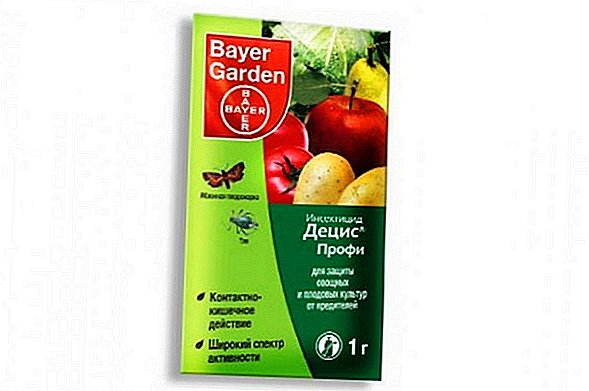
- "Ectomin";
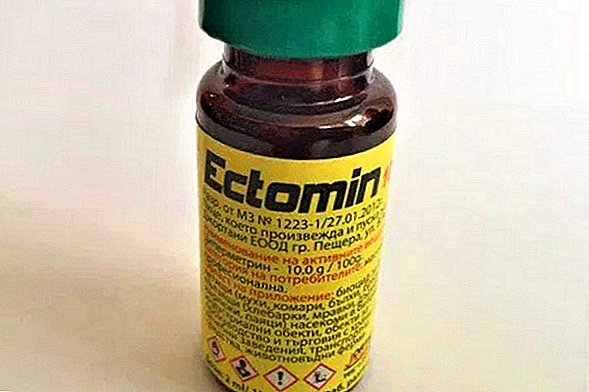
- "Extrazolem-M";
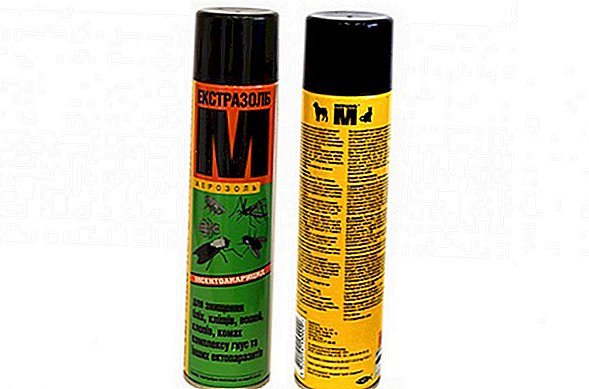
- "Ciperilom".
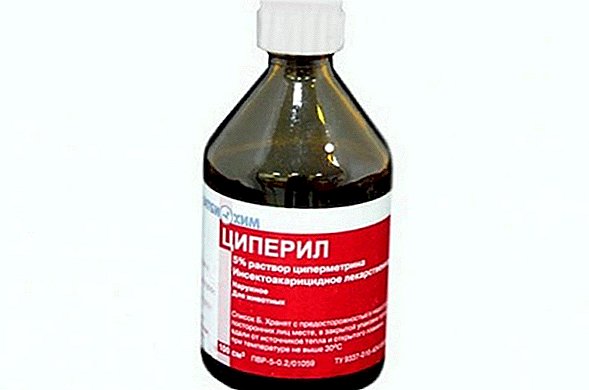
Treatment with insecticides is also effective, for example, with a spray containing EC permethrin at a concentration of 0.005%. After the last treatment, the chicken coop is thoroughly aired, and the equipment and implements that were in it are washed with soda ash.
Important! When the air temperature is below 20 degrees, the treatment of the room with chemicals will be ineffective.
Folk remedies
Chickens should have access to a mixture of ash and sand for "dry bathing", with the help of which they effectively reduce the number of parasites on their bodies. The owner must ensure that the mixture was in sufficient quantities and remained suitable, not contaminated and not soaked.  The smell of many plants scares off the blood-sucking parasite:
The smell of many plants scares off the blood-sucking parasite:
- sagebrush;
- bow;
- garlic;
- parsley;
- celery;
- horseradish;
- bird cherry;
- marigold;
- Solanaceous - potato and tomato peel.
Did you know? The tick survival mechanisms are striking: this parasite is able to “slow down” at any stage of its development, if it considers the conditions unfavorable for itself: the female can suspend egg-laying for several months, the larva is able to delay molting and so on.
They are laid out in a hen house, added to bedding and pet food.  Effective radical environmentally friendly means is scalding with boiling water and fire treatment with a gas torch or a blowtorch.
Effective radical environmentally friendly means is scalding with boiling water and fire treatment with a gas torch or a blowtorch.
Syringophilosis
The causative agent of this dangerous disease, which is another name for feather scabies, is a trombidiform mite, parasitic in the upper feather of an adult chicken. Insect dimensions 1x0,5 millimeters, color matte white or dark gray. First, the females inhabit the chicken, the males join later.
Syringophilosis is dangerous in that its pathogens carry a formidable viral disease - smallpox. In addition, egg production is greatly reduced, if not completely stopped, and sick chickens are depleted and can die without treatment.
Ways of infection
The tick prefers not to leave its donor, which has a comfortable temperature for it and is at the same time food, and infection occurs through other birds with parasites on their bodies.  Expansion begins with the steering wings of the chicken, from there comes a massive settlement of the remaining feathers.
Expansion begins with the steering wings of the chicken, from there comes a massive settlement of the remaining feathers.
Symptoms
This disease affects individuals after five months - the time of formation of the contour feathers, in the center of which they multiply en masse.
Symptoms characteristic of chicken scabies:
- chicken nervousness due to itching, constant carding and spitting;
- massive breaking and falling of feathers, starting from the steering and flywheel;
- the feather becomes dull;
- the core of the pen darkens, loses transparency and is deformed;
- anemia, in which the comb and earrings pale, mucous membranes;
- bare "bald patches" on the skin, wounds and redness on them;
- feather bags inflamed;
- loss of appetite and, as a result, exhaustion;
- violation and termination of egg production.
Did you know? A female tick that has got drunk with blood may increase in size by 80-120 times. If people could do that, their weight would be 600-700 kilograms!
Treatment
Treatment for syringophillosis is made with the following drugs:
- "Diazinon";
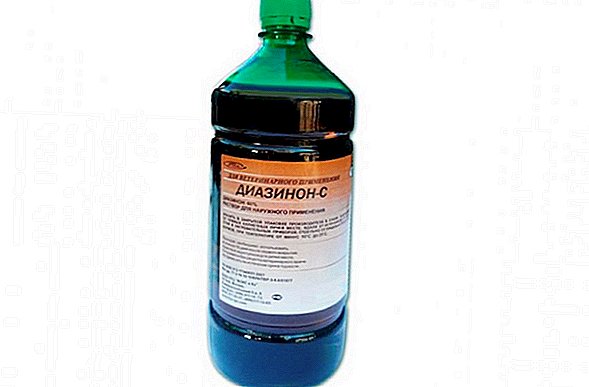
- "Amidofos";
- "Cyodrin";
- "Bitex";

- Tivit;
- "Ikosan";
- "Stomazan" and others.
It is necessary to process twice with a 10-day interval. In some advanced cases, one or more birds, severely affected by ticks, should be destroyed in order to avoid the spread of infection throughout the chicken coop, the fallen feathers are burned.
We advise you to read about how to choose the right chicken coop when buying, how to make a chicken coop from a greenhouse, how to build a chicken coop for the winter, how to make it ready, how to make ventilation and lighting in the chicken coop, and also how best to heat the chicken coop in winter.
Room processing
The room before processing is released from the inhabitants. Everything inside, including nests, perches, inventory, litter, etc., is treated with "Benzophosphate" 0.2% concentration. Drug consumption: 100-200 milliliters per square meter. The procedure is repeated every 10 days until complete destruction of the parasite.
Folk remedies

In order for chickens to lead an independent struggle with amateurs to profit at their expense, they are offered "dry baths":
- 1 part of sulfur, 1 part of lime, 8 parts of sand;
- 1 part sulfur, 1 part tobacco, 8 parts sand.
Acariform mite
The favorite habitat of the acariform tick is chicken legs and beak. It is very difficult to see the parasite with the naked eye, its females reach a maximum of 0.5 millimeters, but the males are much smaller.
The parasite causes a disease called knemidokoptoz, its popular name - "lime foot". Roosters more chickens are exposed to the pest.  Penetrating into the upper layer of the epidermis, the tick actively multiplies, consistently affecting:
Penetrating into the upper layer of the epidermis, the tick actively multiplies, consistently affecting:
- ceral;
- paws;
- beak;
- cloaca;
- eyes;
- joints and phalanges of the fingers in the latter stages, which leads to their necrosis.
As the acariform mite multiplies in the skin, the horny scales covering the paws rise, the surface of the paws is bumping. While progressing, the disease contributes to the deformation of the beak and the looseness of its tissues. In addition, the parasite poisons the body of its donor with waste products, which leads to a decrease in productivity and deterioration of well-being.
Ways of infection
A hen of any age is prone to cnemidocoptosis, which is transmitted by infected birds - domestic and wild; a hen can also become infected through troughs and troughs and other equipment.  The parasite loves dirty and damp places, starts where poor conditions are maintained, especially if the livestock immunity is reduced by this circumstance, as well as by an inadequate diet.
The parasite loves dirty and damp places, starts where poor conditions are maintained, especially if the livestock immunity is reduced by this circumstance, as well as by an inadequate diet.
Important! An acariform tick does not infect a person, but the latter may well bring the parasite to the chicken coop on its own shoes or clothes, where it can exist for several days.
Symptoms
Depending on the place of penetration of the tick into the body of the chicken and the spread of it, symptoms of the disease appear. More often it is paws and beak. In the most common case, when an acariform mite infects the paws of a bird, the scales on them rise, become overgrown with tubercles, and if the knemidocoptosis is allowed to flow by gravity, the tissues become inflamed, followed by necrosis.  The disease can manifest itself with the following symptoms:
The disease can manifest itself with the following symptoms:
- the bird changes behavior: it becomes nervous, pecks its own paws;
- the chicken cannot stay on the perch;
- the beak is deformed, it becomes larger and, as it were, turned downwards;
- the bird falls feathers and inflamed skin;
- near the base of the pen accumulate dead skin epidermis crusts.
Treatment Currently, there are quite effective ointments for the treatment of prism:
- "Novertinovaya";
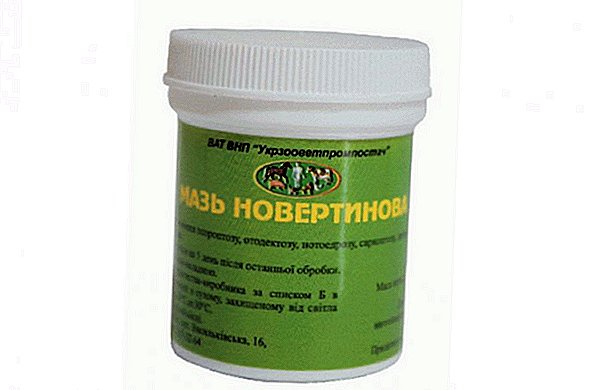
- "Aversectin".
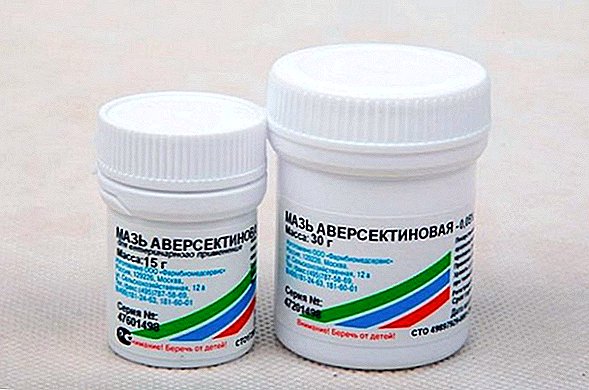
However, they are not without drawbacks:
- not intended for frequent use;
- undesirable hit on healthy skin due to the toxicity of drugs and their ability to accumulate in the skin.
Veterinary acaricidal preparations from a veterinary pharmacy can also be used.
Did you know? At different stages of development, the individual tick has a different length of the proboscis, which makes them "culinary passions." That is, ticks of different ages prefer different parts of the body and even different donors: small rodents, birds, mammals.
Room processing
In order to avoid reinfection, it is advisable to burn or at least scald all wooden structures used by tick-infected individuals. If the bird lives in cages, they must be disinfected and scalded. Treat the chicken coop "Creolin" 5%. 
Folk remedies
If you managed to track the beginning of the disease, you can try a warm bath with laundry soap, in which the paws of the bird are immersed.
Important! A universal remedy for parasites are dust baths, for which sulfur is added to the mixture of ash and sand.
If the symptoms are already sufficiently pronounced, the affected areas are smeared with clean tar or kerosene is added to it. These tools can be used in the form of trays or applied to the paws with a swab or brush. Also successfully used boron Vaseline, causing it on his paws.
It creates an airtight film, and the mite dies. The tool is used every day or every other day 2-3 times and repeat the course after two weeks. They can treat and the bird, which does not show the characteristic symptoms, but it is in contact with infected relatives.
Video: how to deal with chicken mites
Bed bugs
Bedbugs are the smallest insects that prefer to bite their prey at night, but prefer to spend their day in shelters like cracks. These parasites are externally similar to ticks, and they can be confused: brown, flattened at the sides, swelling from sucked blood. The female bug is capable of breeding after drinking blood.
Domestic chickens do not want to "meet" with pigeon and bed bugs: they carry the risk of contracting dangerous diseases such as plague, fever.
Important! A bug very tenacious and without food can last up to one and a half years, perfectly enduring unfavorable conditions, and a hungry bug bolds and goes to fish in the afternoon.
Ways of infection
Bedbugs on chickens do not live permanently, they prefer cozy shelters, going out at night for "hunting." Nevertheless, the source of the parasite can be just a new hen in a chicken coop or any other bird.  A man on shoes and clothes can also bring a parasite to a chicken coop. Maybe he can get there with food, inventory and other household ways.
A man on shoes and clothes can also bring a parasite to a chicken coop. Maybe he can get there with food, inventory and other household ways.
Symptoms
Chicken pounded by bugs:
- constantly scratches and cleans feathers;
- has bite wounds and irritation on the skin;
- looks worse: her feathers do not shine and weaken;
- due to a fall in the level of immunity, it quickly picks up various diseases that are cured quite hard and for a long time;
- sleeps badly at night due to bites and, as a result, rushes worse.
Learn how to get bedbugs at home by yourself.
Treatment
Previously, klopova dominance was treated with powder powder, now it is discontinued. 
Currently there are many ways to rid the bird of bloodsuckers:
- chlorophos solution 1%;
- solution "Inkura" 2%;
- mechanical traps with a sticky layer: tapes or sheets.
Important! It is impossible to mix different drugs during processing, it is also desirable to repeat the processing with the preparation that was used during the initial one.
Room processing
After detecting indoor bugs, chickens should be immediately relocated from there. Without blood, they will at least stop multiplying.
Before disinfection, the hen house should be cleaned, after which you can invite specialists who will disinfect the room, or do it yourself using:
- Neocidol 0.5%;
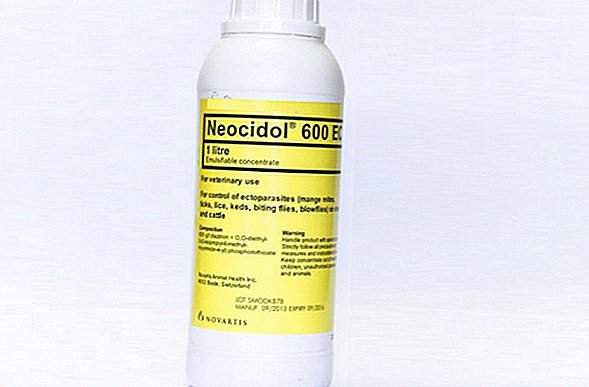
- chlorophos solution 2%;
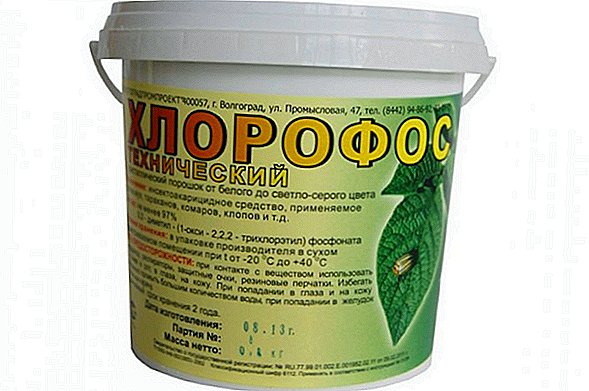
- "Inkura" or "Musang" according to the instructions.
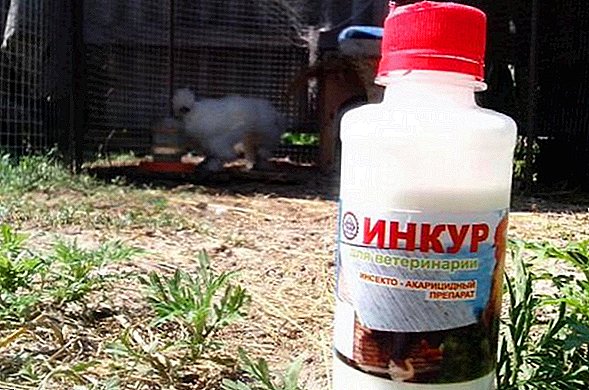
Most likely, re-treatment after a week or 10 days. Also very effective is the firing of a non-wooden structure with a blowtorch or a gas lamp.
Folk remedies
For the prevention and control of bedbugs, as with other parasites, wormwood is used. In addition to her, the parasites will reject the smell of Persian chamomile.
Did you know? The ancient Egyptians had nothing to believe that the bite of a bed bug could protect against the bite of a venomous snake.
Internal parasites
In addition to external bloodsuckers and other parasitic creatures, the internal parasites can overcome the chicken:
- roundworm;

- capillaries;
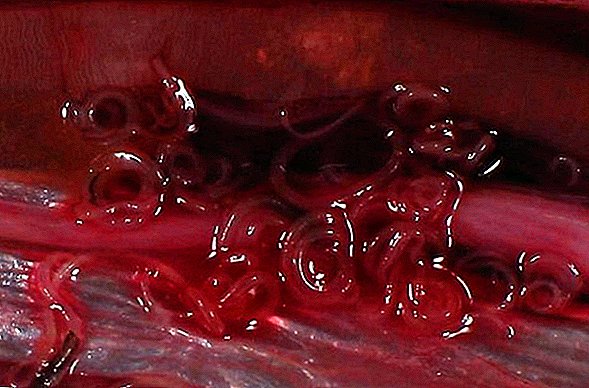
- tracheal red worms;
- pinworms and other.
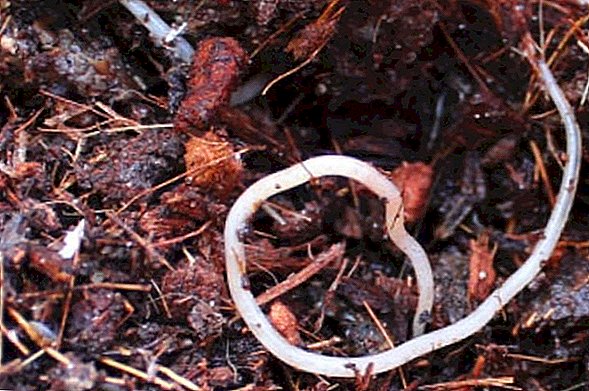
These are helminths, and they are divided into groups:
- flat;
- round;
- tape
They can settle not only in the intestines and gastrointestinal tract, some of their varieties can be chosen:
- liver;
- lungs;
- the circulatory system and so on.
Helminths
As a rule, different helminths cause similar symptoms:
- reduced egg production;
- softening of the eggshell;
- deterioration in the appearance of the bird;
- enteritis with diarrhea or constipation;
- inflammation around the cloaca of the skin;
- blanching scallops and earrings;
- lethargic condition;
- decrease or, conversely, increased appetite for weight loss.

"Pick up worms" chicken can from anywhere, especially if it is given free-range. However, the content in the aviary or cage also does not guarantee from anything, if not to comply with sanitary and hygienic standards.
Did you know? Female ascaris helminth under favorable conditions is able to lay up to 240 thousand eggs.
Sources of infection can be:
- domestic and wild birds;
- domestic and wild animals;
- people;
- clams and so on.
The danger for humans is that the helminths are able to transfer their larvae through the egg, and they will fall into its gastrointestinal tract. Chickens who have suffered constipation are subject to slaughter, because the ascarid tangle will not come out on its own. 
Important! If you find worms in someone in the household or family requires preventive treatment for the whole family.
Treatment methods
It is easiest to cope with roundworms, such as ascaris. Even folk remedies can help in the fight against them. However, the same roundworm can destroy the chicken, if you do not take any measures. Ascariasis is more common than other diseases caused by helminths.
Belt worms cause drepanidoteniasis, which demonstrates, in addition to intestinal symptoms, neurological ones such as impaired coordination and paralysis as a result. It is very difficult to get rid of tapeworms: they, dropping the body under the action of strong preparations, remain in the intestine as adhering to the wall of the head, which will later grow new segments.
Video: prevention and treatment of worms in chickens It is desirable to treat chickens against worms with the help of pharmaceutical preparations, while traditional medicine has successfully acted as auxiliary in general therapy. Do not be afraid of "chemistry", modern drugs do not carry any danger to the bird, but they kill not only worms, but also eggs.
Did you know? Pinworm eggs are transmitted by airborne droplets. So, a large dog can disperse them in a five-meter radius, a cat - in a three-meter.
Drugs
Veterinarians for the treatment of diseases caused by worms, most often prescribe "Fludenvet" and "Invermectin".
- Have "Fuldenveta" a wide range, it acts on the worms at all stages of their development. This is a drug in powder form, which is added to the feed in the proportion of 3 grams per kilogram. The course for deworming is usually seven days, if necessary, it is repeated after a month. The drug is 1% and 2.5% concentration. If the birds are treated with a second, for a certain period specified in the instructions, you can not eat eggs and meat "patients."
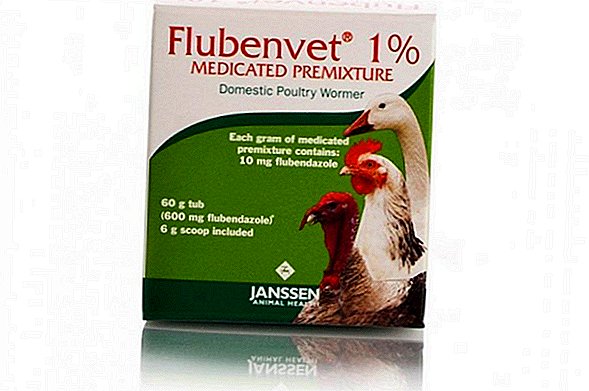
Did you know? The worms living in the digestive tract are protected from its aggressive environment by the release of anti-enzymes - special protective substances.
- "Ivermectin" also a broad spectrum of action, it is quite effective not only against worms, but also against lice, ticks and other external parasites. However, it is not used against tapeworms. Veterinarians practice the appointment of "Invermectin", despite the fact that it is not licensed for poultry. It is necessary to adhere to the dosages prescribed by the doctor, and not indicated in the instructions.

Important! It is necessary to strictly adhere to the dosage of drugs from worms specifically in chickens, since the means are intended for deworming of many species of animals of different sizes and masses: it is easy to confuse, and the consequences for the livestock can be dire.
Video: treatment of worms in chickens
Folk method
Folk remedies successfully resist, for example, roundworms, but they can also be powerless against them. They resort to traditional methods as an auxiliary or prophylactic agent, since they do not bring harm and strengthen the effect of the medicine.
It will be useful for you to read how to get rid of worms in chickens.
Our ancestors took out worms in chickens with the help of:
- garlic;
- leek;
- pumpkin seeds;
- walnut kernels;
- pomegranate seeds;
- dried rosehip;
- dried lingonberries.
As a drink, you can offer feathered broths: sorrel and chamomile. Tansy and / or wormwood is added to the litter for the prevention and scaring of parasites, both internal and external. 
Preventive measures
The preventive measures against external and internal parasites include:
- maintaining cleanliness in the hen house and timely cleaning it with the addition of potassium permanganate, lime, potassium;
- early detection of the disease is the key to successful treatment, therefore it is important to regularly inspect the bird for the presence of parasites, as well as monitor the behavior of the wards and take measures if it has changed;
- chickens should have constant access to “dry baths” of sand and ash, so that they can also independently fight against “invaders”;
- New stock must be preventive anthelmintic;
- It is more convenient to carry out disinfecting measures in a practically decorated hen house, for example, with a concrete rather than a wooden floor;
- in the litter and throughout the room it is necessary to add plants with a pungent odor that scare away parasites, and cleaning of solanaceous ones is also good: tomatoes, potatoes;
- It is not at all superfluous to take it as a rule to visit a chicken coop in changeable clothes and shoes, in which you don’t go anywhere else and cannot bring parasites on it to your hens.
Familiarize yourself with popular methods of getting rid of chicken lice.
 Parasites bring great trouble to the bird, whose organism they attack, as well as financial damage and the danger of infecting infectious diseases to people. Prevention in the fight against them is necessary - it can prevent or significantly reduce the diseases caused by parasites.
Parasites bring great trouble to the bird, whose organism they attack, as well as financial damage and the danger of infecting infectious diseases to people. Prevention in the fight against them is necessary - it can prevent or significantly reduce the diseases caused by parasites.



















